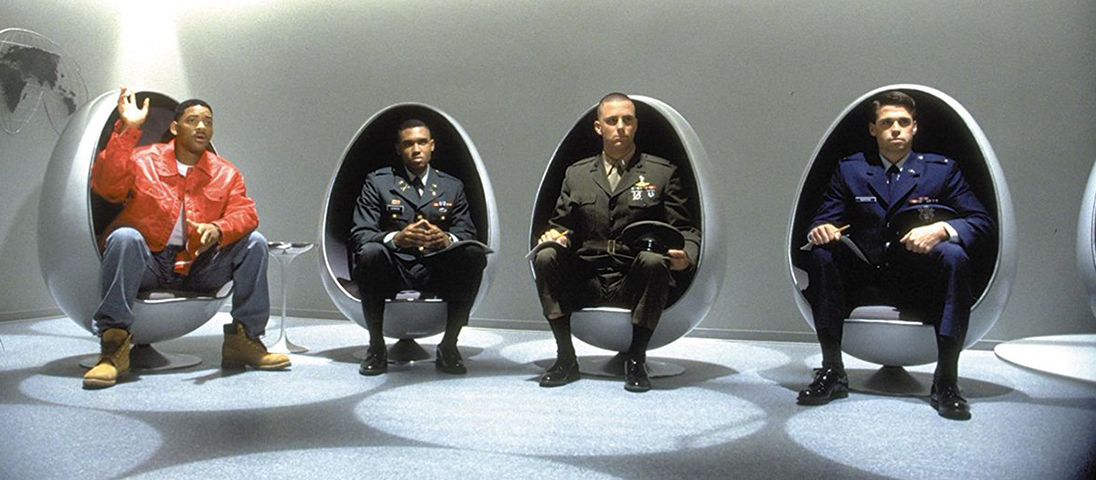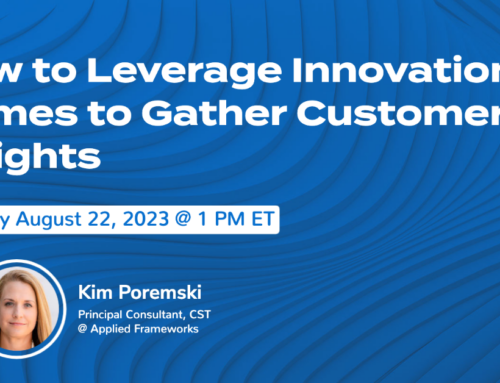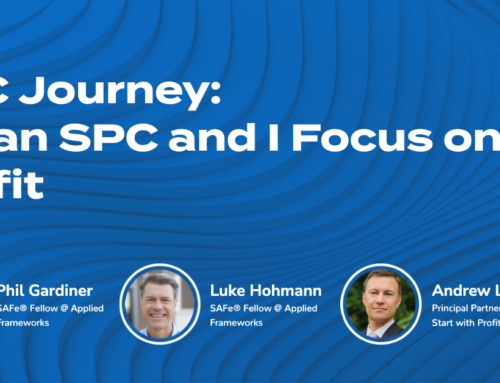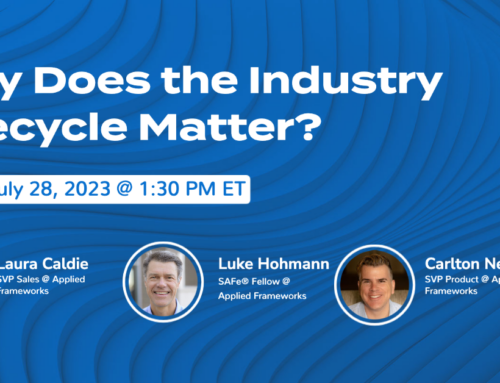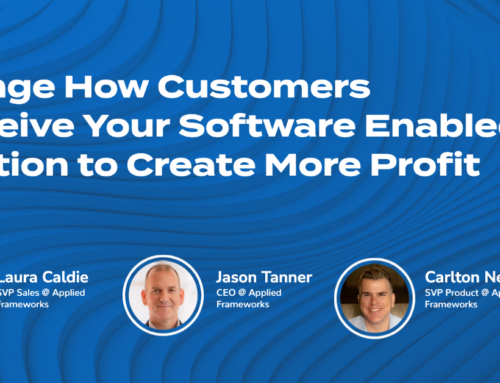This analysis of the Agile Coaching Growth Wheel is the second article in an ongoing series that examines the Agile Coaching role in your organization and how to hire for it.
In our first article in the series, How to Pick The Right Agile Coach, we discussed whether you should hire a Full Time coach or a Consulting Coach (TLDR: Hire both, read the article to find out why.) This article, Evaluating Candidates with the Agile Coaching Growth Wheel, takes a deep dive into using the Agile Coaching Growth Wheel for finding — and evolving — Agilists for your organization.
What is the Agile Coaching Growth Wheel?
The Agile Coaching Growth Wheel is a Creative Commons project developed by a working group of veteran Agile Coaches and supported by the Scrum Alliance. This working group — which I am proud to be part of — has designed the Growth Wheel as a tool for:
“… Agile Coaches, Scrum Masters, Leaders, and anyone who desires to increase their ability to help and grow teams and organizations using Agile principles and practices.”
The Wheel is methodology- and framework-neutral — no Agile technique is favored over another. Instead, its purpose is to assess skill level and provide an evolutionary path.
Skill measurement is accomplished with the Dreyfus Model of Skill Acquisition, which asserts that skills are developed through a combination of formal instruction and practice.
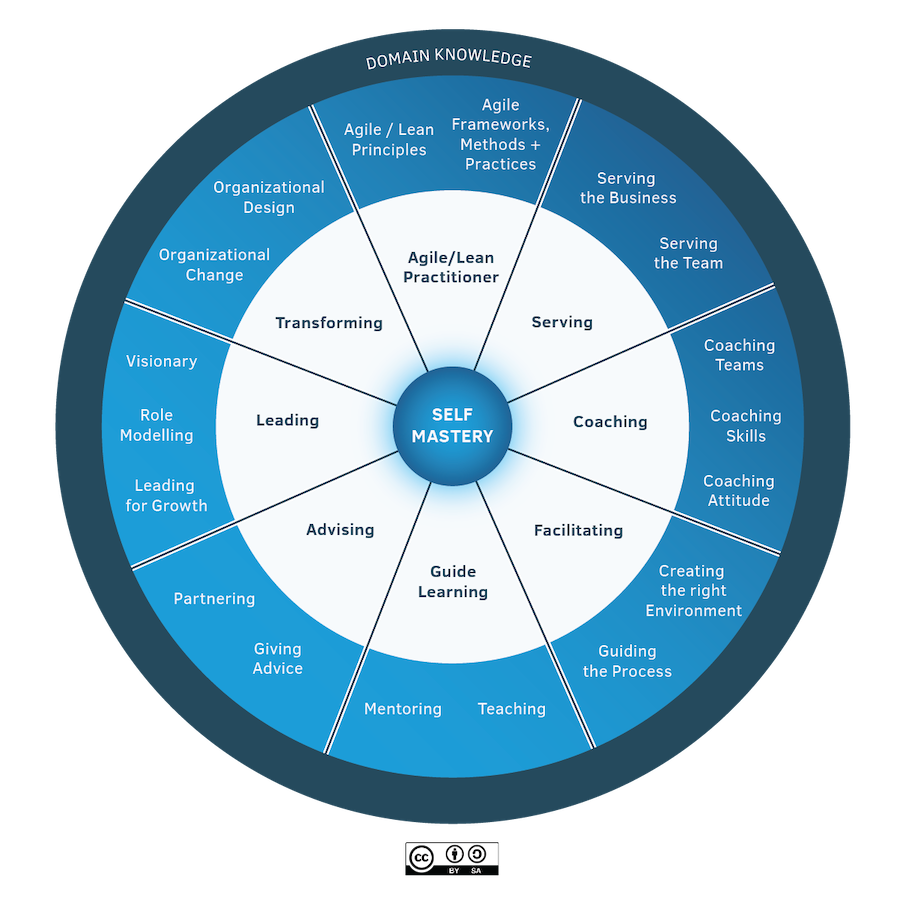
Why Does it Matter?
As Lean-Agile business practices have grown in popularity, so has the practice of individuals calling themselves “Agile Coaches” without a well-understood definition of the term.
Today, if you compare resumes of Agile Coaches, you’ll see a vast spread of experience, skills and knowledge. For example, I have seen a Project Manager, whose only exposure to Agile was a failed corporate transformation and a two day class, call themselves an “Enterprise Agile Coach.” On the other extreme, I recently discovered someone who has been practicing Scrum for over a decade who still thinks of themselves as “Just a Scrum Master.”
With such a huge swing in the experience and mindset, it can be downright daunting for an organization to seek out Agilists to support their Business Agility efforts.
Common Hiring Practices Don’t Work for Agile Roles
Most often, the traditional way of screening and evaluating applicants for a job role will not get you the best candidate for your business agility needs, for the following reason.
Let’s take the two examples from above, the Project Manager with a two day workshop and the Scrum Master with a decade of team level Scrum experience. Your company is a 100 year-old insurance company that has recently been losing business due to an inability to quickly adapt to the market’s needs like its younger competitors.
The Project Manager has a Masters in Business Administration, and deep domain knowledge in the insurance field. They were part of a short lived attempt to implement Agile at another insurance company and have a two day Agile certification. They have also been a Project Management Professional (PMP) for over a decade. They are advertising themselves as an Agile Coach with insurance expertise.
The Scrum Master has a computer science BA from some college you’ve never heard of, has never worked in the insurance field, and holds no certifications of any kind. They learned Scrum by doing it in a team that implemented Extreme Programming (XP). They found they had a knack for facilitation, which led them to study more deeply in the theory of Agile and Lean. Over the last decade they have worked with teams at all levels of experience and had remarkable success.
Feed these two resumes into your HR system and which one is most likely to pop out the other end?
Using the Agile Growth Wheel To Evaluate Your Agile Coaches
While the Growth Wheel is only in its first release, it can still serve as an incredibly useful tool for an organization to evaluate candidates for any Agile related role.
Competency Areas: What Do You Need?
First off, look at the Competency Areas and decide what’s important. You may not need certain competencies for the role you need and that can help you focus on what is important.
Example 1: You’re going to do a two team pilot liftoff and you’re looking for a coach who can guide these teams through their first six months.
Looking at the Wheel, you probably don’t need someone with deep skills in Advising, Leading and Transforming. Because your teams have no experience in Agile at all, Guide Learning is probably going to be really important.
Example 2: You’ve been using Scrum successfully in your development organization for a couple of years. Now it’s time to align the entire company around business agility practices to become more competitive in the market. You’re looking for someone to help leadership change your strategy and planning practices from an annual planning cadence to a rolling wave practice.
Looking at the Wheel, you’ll want to focus on Transforming and Advising with strong support from Advising and Facilitating. The Coaching competency area probably is not as important here, especially at the team level.
Evaluating Skill Level: Behavioral Interview Questions
Now that you have some candidates, how will you determine if they have the skills you need? Behavioral interviewing focuses on a candidate’s past experiences by asking them to provide specific examples of demonstrated knowledge, abilities and skills. Behavioral Interview Questions are considered one of the better ways to conduct interviews and have been growing in usage over the last decade. Using behavioral interview questions, you can structure the interview based on the desired Agile Coaching Growth Wheel Competency skill levels you want.
Let’s say we’re evaluating a consultant for the two-team lift-off. After looking at the Agile Coaching Self Assessment section on Competency Stages, you have decided a Guide level in Facilitating is needed. The teams are smart and used to continuing education, and so a Practitioner in Guided Learning is probably sufficient.
Facilitation: Looking at the Guide level skill description we see the following keywords: “in-depth,” “synthesize,” and “tailor.” Try this interview question:
- Describe a time you had to facilitate a group that didn’t have a fixed agenda or goal to start with. Explain how you got them to an agenda and goal. What techniques did you use?
Guide Learning: Looking at the Practitioner skill level we seeing the following keywords and phrases: “analyze,” “differentiate,” “without close supervision,”and “resolve conflicting priorities.” Try this question:
- Tell us about a time when you had to create an introduction course that was tailored to a non-software team. How did you adjust the material to make sense outside of software?
For more on how to do Behavioral Interviews I highly recommend the Manager Tools podcast series and their Interview Creation Tool.
Let’s Start a Discussion
The Agile Coaching Growth Wheel is a tool. How we use the tool and techniques are going to vary. What are your thoughts? Do you think something is missing from it? Please fill out the Scrum Alliance survey and reach out to me with your thoughts. I’d be happy to meet Zoom to Zoom to talk over it, present a brown bag for you and your coworkers, or speak at a Meetup. It is through engagement with the community that we will make the Growth Wheel a worthy successor to Lyssa Adkin’s original Coaching Model.

